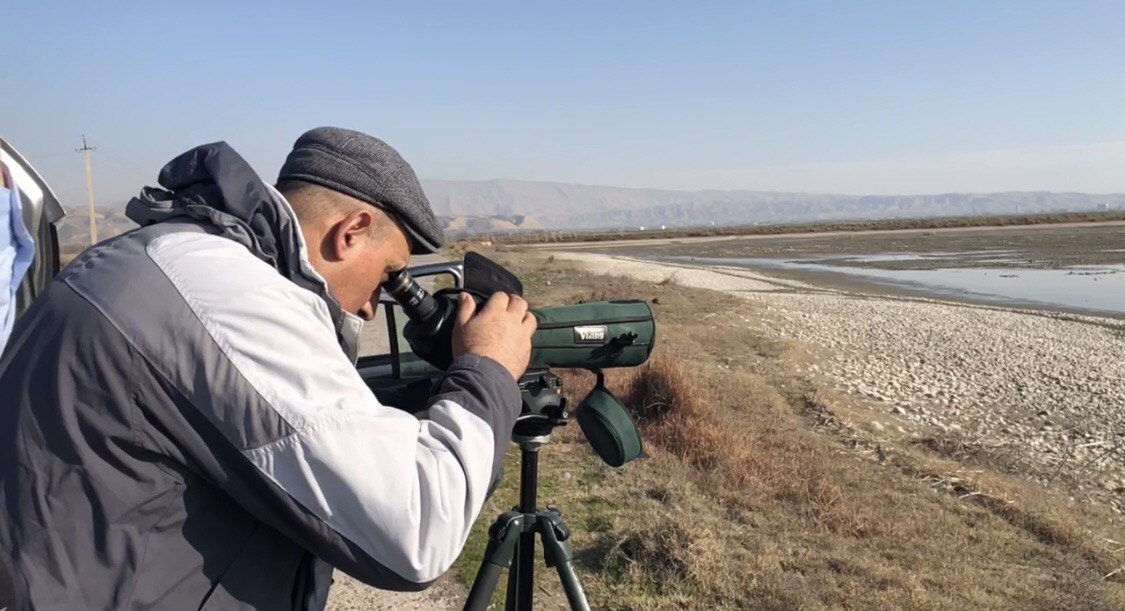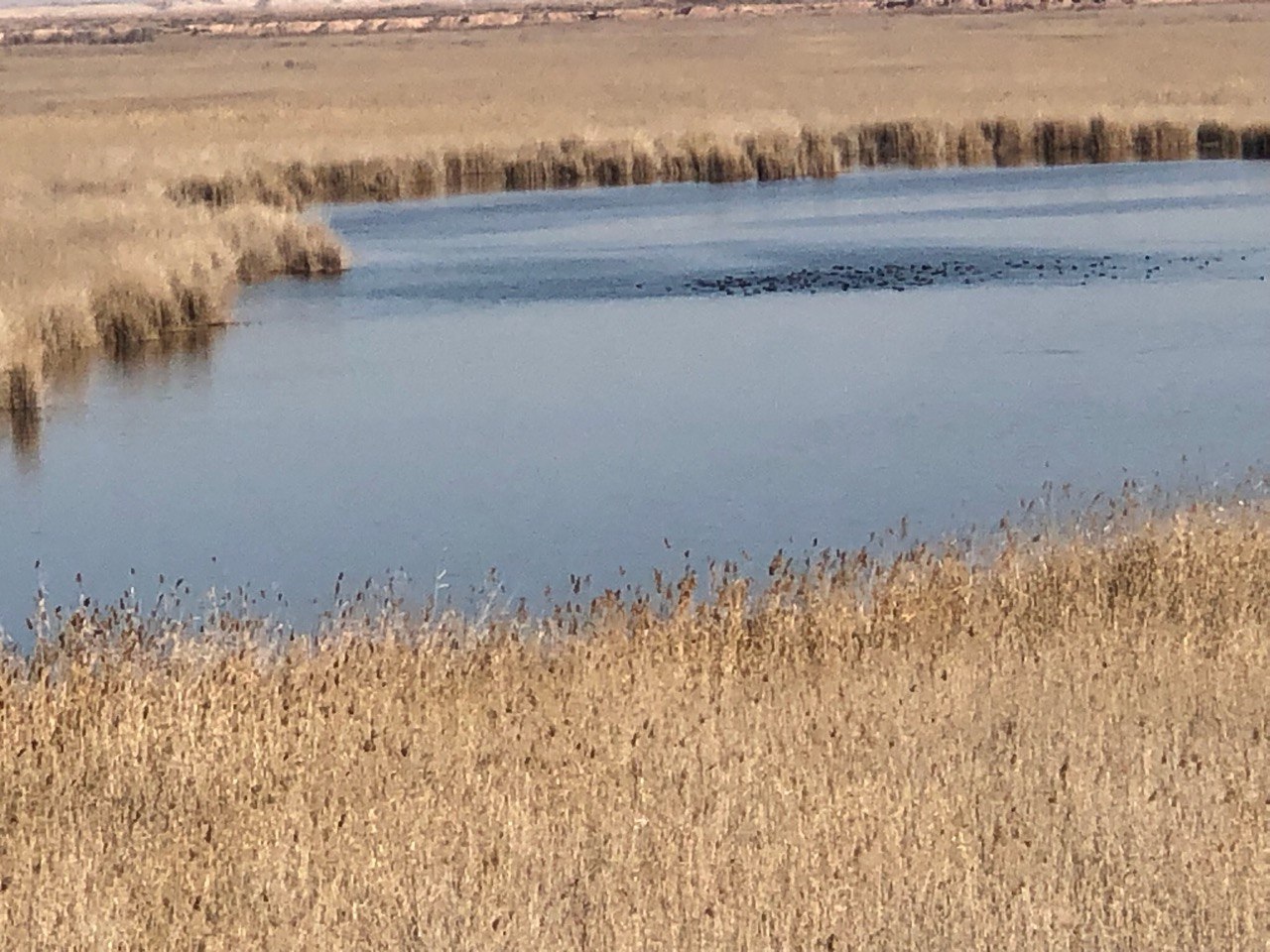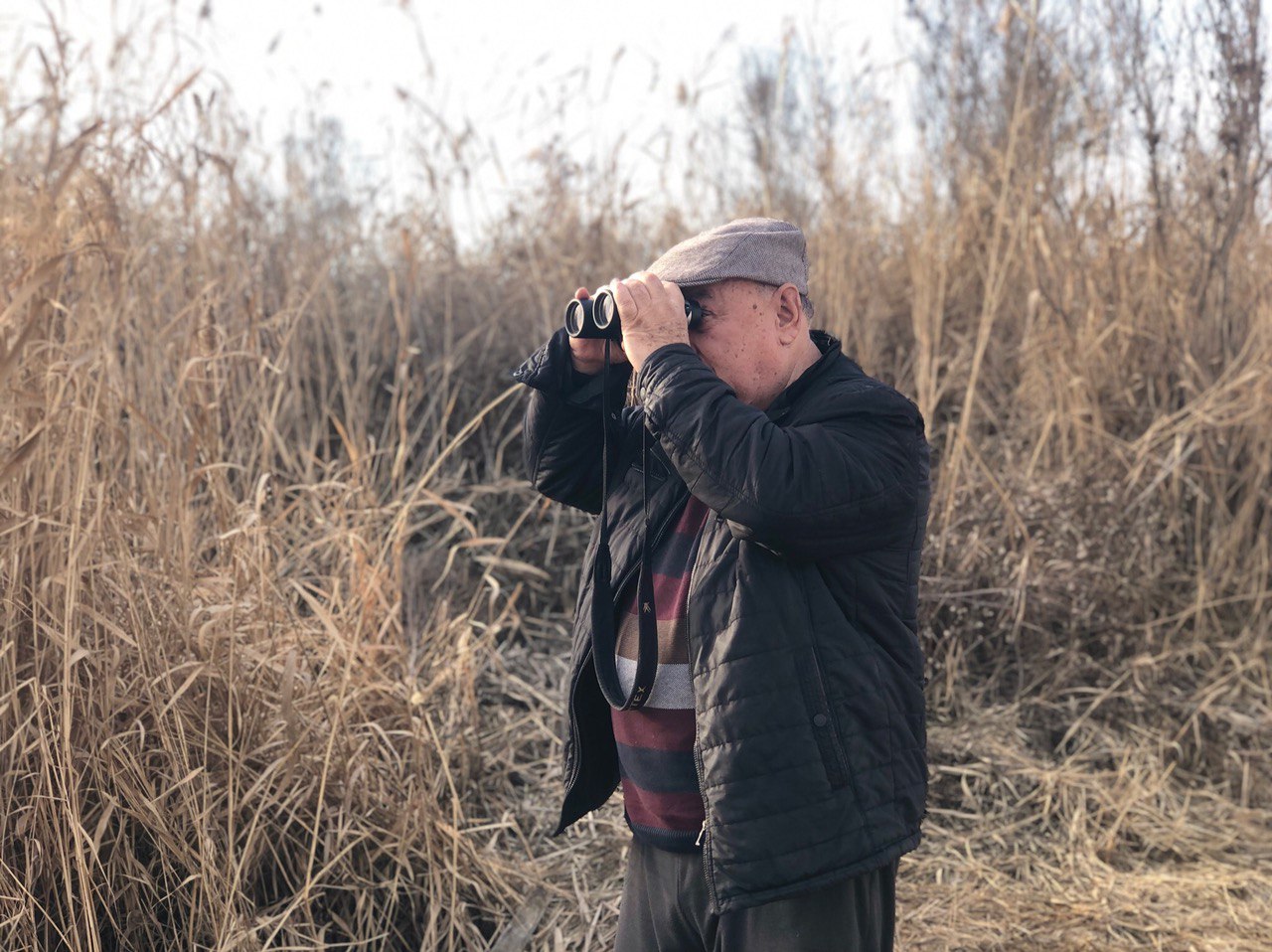According to Tajik ornithologists, climate change poses a serious threat to the population of birds and other animals. The migratory bird population is declining especially rapidly.

Scientists are concerned about the decline in the species and numbers of various animal species, including birds. They connect this primarily with human impact and climate change, which leads to negative consequences, including a reduction in the habitat areas of ornithofauna.
Thus, as a result of human impact over the past 50-60 years and human economic activity, South-Western Tajikistan has changed significantly, including the construction of hydraulic structures, the active agricultural cultivation of large lands, which contributed to the radical reconstruction of the plain desert landscape, turning it into oases.
Natural vegetation preserved somewhere on river floodplains and in hilly areas experiences significant grazing pressure, mainly in winter. As a result, new anthropogenic ecosystems emerged, which affected the ornithofauna of the country.
According to ornithologists, the populations of birds and other animals are seriously threatened by climate change. Global warming causes birds to nest early, sometimes even in February, which is dangerous for the chicks if cold weather returns. As annual monitoring shows, over the past 50 years, according to various sources, about 50 species of birds, mostly migratory, have disappeared in Tajikistan.
The latest bird count for the past winter season 2023/2024 was carried out by expedition groups of ornithologists from the Institute of Zoology and Parasitology of the National Academy of Sciences of Tajikistan in the territories of reservoirs in the A.Jomi district, as well as lakes of the Tigrovaya Balka Nature Reserve, such as Polvontugay, Kirpichnoe, Daryokul, Central, Korolevskoe, Promkhoz, Baipazi reservoir, and reservoirs in the outskirts of the Dushanbe city.
Winter Count of Migratory Birds
According to a Senior Researcher at the Institute of Zoology and Parasitology of the National Academy of Sciences, Candidate of Sciences in Biology Garibmamad Garibmamadov, the species composition of wintering birds in Tajikistan is quite rich and diverse. It includes birds arriving for the winter from the northern regions of neighbouring countries (mainly from the West Siberian part of the Russian Federation), birds descending from the mountains, and local wintering species. Of about 400 species and subspecies registered in our country, about 81 (more than 20%) are found in wintering areas. At the end of February 2024, ornithologists visited the Khatlon region, including the Tigrovaya Balka Nature Reserve, and reservoirs near Dushanbe to conduct an annual winter count of migratory birds.
“A comparative analysis of bird counts in different years showed that among the most widespread species, half of them decreased in numbers, while the rest remained constant. Species with increasing numbers have not been identified. All this is connected with ongoing climate change,” the scientist said.
In Terms of Numbers
According to the ornithologist, the 2024 winter count recorded a total of 65 species and subspecies of migratory birds, with a total of 4,816 birds.
In particular, near reservoirs in the A.Jomi districts – 1313 birds, near the lakes of the Tigrovaya Balka Reserve: Lake Polvontugay – 430 birds, Lake Kirpichnoe – 688 birds, Lake Daryokul – 264 birds, Lake Central – 410 birds, Lake Korolevskoe – 73 birds, Lake Promkhoz – 755 birds, as well as near Baipazi reservoir – 35 birds, and reservoirs near Dushanbe – 848 birds.
Garibmamad Garibmamadov noted that in past years, the number and species composition of migratory birds near the reservoirs of Khatlon region was much larger and more diverse. For example, in 2008, during the winter count of migratory birds, 7,810 birds from 39 species and subspecies of migratory birds were recorded. In 2009, 9,448 birds from 63 species and subspecies were recorded; in 2010 – 24,048 birds from 63 species and subspecies of migratory birds; and in 2011 – 13,925 migratory birds.
Decline in Numbers
According to the scientist, climate change may cause shifts in the geographic habitat of bird species. The decline in migratory bird numbers in 2024 compared to previous years could be associated with a variety of factors, including climate change, habitat degradation, habitat loss due to human activity, and other factors.
For example, a decrease in numbers is noticeable in two species of the cormorant family. In 2024, a total of 19 great cormorants were recorded; in 2008, there were 84 birds; in 2009 – 95 birds; and in 2010 – 45 birds.
In 2024, 32 pygmy cormorants were recorded, while in 2008, there were 198 birds; in 2009 – 185 birds; and in 2010 – 167 birds.
“Their populations are decreasing annually,” says Garibmamad Garibmamadov.
According to him, from December to February, water reservoirs are often covered with ice, which leads to a sharp deterioration in the living conditions of waterfowl. In this regard, some species migrate further south, while others use reservoirs only for daytime rest and fly to rivers and streams to feed.
The size of the bird population depends on the air temperature amid global warming and changes in habitat.

According to Garibmamad Garibmamadov, the importance of studying seasonal bird migrations is widely known. Migratory birds play a significant role in the spread of bird flu, and parasitic and pathogenic organisms. They also pose threats to the safety of aircraft. These studies are particularly significant today considering the processes of global climate change and the ever-increasing burden of human impact on the environment. “Solving many related practical issues requires a deep and comprehensive study of seasonal bird migrations, since over the past 50 years, the environmental situation has made its adjustments,” he says.
Decreasing Species Composition
Garibmamad Garibmamadov argues that climate change is affecting the lives and habitats of birds. If conditions worsen, birds leave their territories and move to more favourable places.
“There are many examples. Previously, common cranes had not been found on the Dangara Plateau but after the development of crop fields, they are found here more often. In 2005, academician Islom Abdusalyamov found about 500 birds during a winter bird count; ten years later, we recorded more than 1,500 birds,” the scientist noted.
Another example is that large flocks of geese – from 25 thousand and above – flew to the Kayrakkum reservoir for the winter. Their number decreased annually, and now, there are very few migratory geese there.
“The reasons for changes in species composition may be related to the adaptation of birds to new conditions or changes in the distribution of birds as a result of climate and ecosystem change,” says the biologist.
According to the ornithologist, in terms of species, most of the wintering birds in South-Western Tajikistan are semiaquatic and aquatic birds, as well as corvids.
On the system of lakes of the Tigrovaya Balka Nature Reserve, where the lakes are small but deep, the main species are coot, red- crested pochard, and common pochard. There are small numbers of grey geese, mallards, shovelers, and tufted ducks in winter. Eurasian coots and common pochards are numerous in almost all reservoirs.
“The number of wintering population varies significantly from year to year, which is connected with the temperature factor, which is certainly significant for waterfowl, acting together with other factors. The total number of wintering birds has decreased by 2-3 times over 40-50 years,” said Garibmamad Garibmamadov.
For example, according to the 1974 research, at the Vakhsh and Tigrovaya Balka stations, 13 species of migratory birds were recorded during their migration: the black-tailed godwit, the collared dove, the rosy pelican, the Eurasian hobby, and others. In recent research, they were either not discovered or only single birds were recorded. A large difference exists between the analysis of past and present years in the species composition, firstly, due to changes in environmental conditions and the human impact. The data of the Hissar Valley shows that in recent years, waterfowl have appeared on the outskirts of Dushanbe due to the construction of artificial reservoirs and wastewater treatment plants. The second reason is encounters of very rare birds that are recorded by one or another researcher (white stork, black stork, osprey, bustard, collared pratincole, little swift, etc.).
“The third reason is the appearance of unusual migratory birds and the spread of new species, for example, such as the collared dove. This indicates a significant change in the species composition of migrant birds over the past 50 years,” the scientist noted.
Urbanisation and Birds
The scientist also focused on the dominant species of birds in the capital. According to him, massive urban development, in particular the capital, has made adjustments to the species composition of the ornithofauna.
“In Dushanbe, as our observations show, there are more birds in those areas where parks and green gardens are opening, and fewer of them in places where many buildings are constructed and water reservoirs have dried up. For example, due to the significant change in the natural design of the outskirts of the city of Dushanbe in the 1970s-1980s, a redistribution of species occurred. Quantitatively, three species dominate (78.1%): rock doves, rooks, and common jackdaws.
The flocking of wintering birds in Dushanbe varies significantly among different species and also depends on the time of day, the nature of the birds’ activity, and weather conditions. A striking example is corvids (rooks and common jackdaws) that feed during the day singly and in small groups outside the capital but at night, “huge concentrations of hundreds and thousands of birds are observed directly in the parks of the capital”.
According to Garibmamad Garibmamadov, when comparing the results of previous and current research, a significant change in the species composition of birds was revealed. The number of migratory birds in the region, mainly aquatic and semiaquatic, has decreased by 2-3 times over the past 50 years, and vice versa, the number of corvids and pigeons has increased by 2-3 times. At the same time, the direction of migrations, the height of flights, and the daily activity of birds did not change.

Talking about the intensity of bird movements, the scientist noted that the average intensity of bird movements in 1973 at the Babatag station was 3,611 birds per day, at the Hissar station, it was 1,360 birds. In 1974, at the Vakhsh station, the average intensity of bird movements was 2,535.2 birds, at the Tigrovaya Balka station – 246.2 birds per day. In the last 50 years, the movement intensity has decreased by 2-3 times.
The ornithologist noted that, according to various sources, 1,800 out of the 11,000 species of existing birds migrate, some of them covering enormous distances. As migratory birds cross national borders along their migratory routes to breed, feed, rest, and winter, international action to protect them is essential. To determine the impact of climate on fauna, long-term observations are necessary.
According to Garibmamad Garibmamadov, representatives of flora and fauna develop protective mechanisms against any external changes. Birds, in fact, warn of the looming dangerous consequences of declining biodiversity due to climate change. The changes that people make to the environment are destroying the birds’ habitat, putting them at risk.
“To preserve biodiversity and birds’ populations, government bodies and public environmental organisations have to take measures to provide them with migration routes, which will create conditions for their survival,” noted Garibmamad Garibmamadov.

